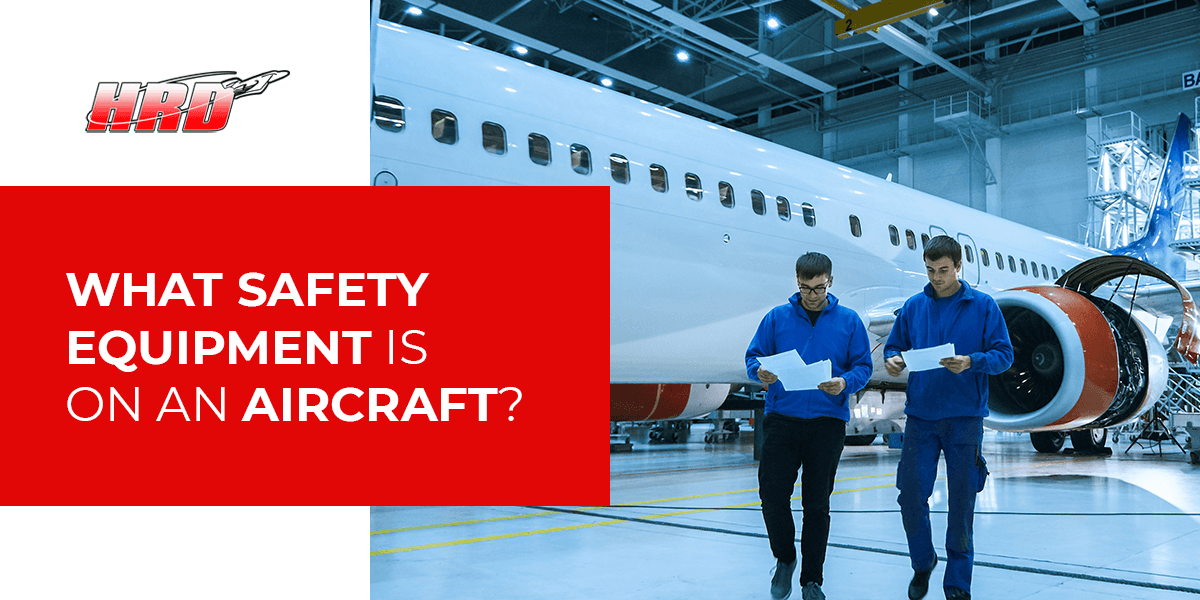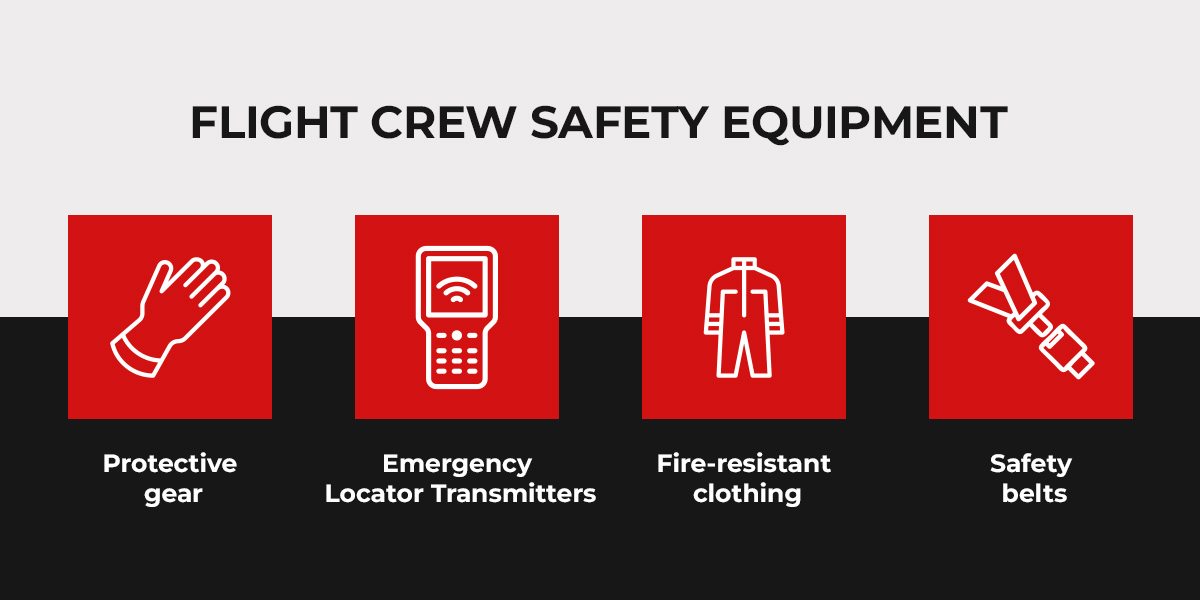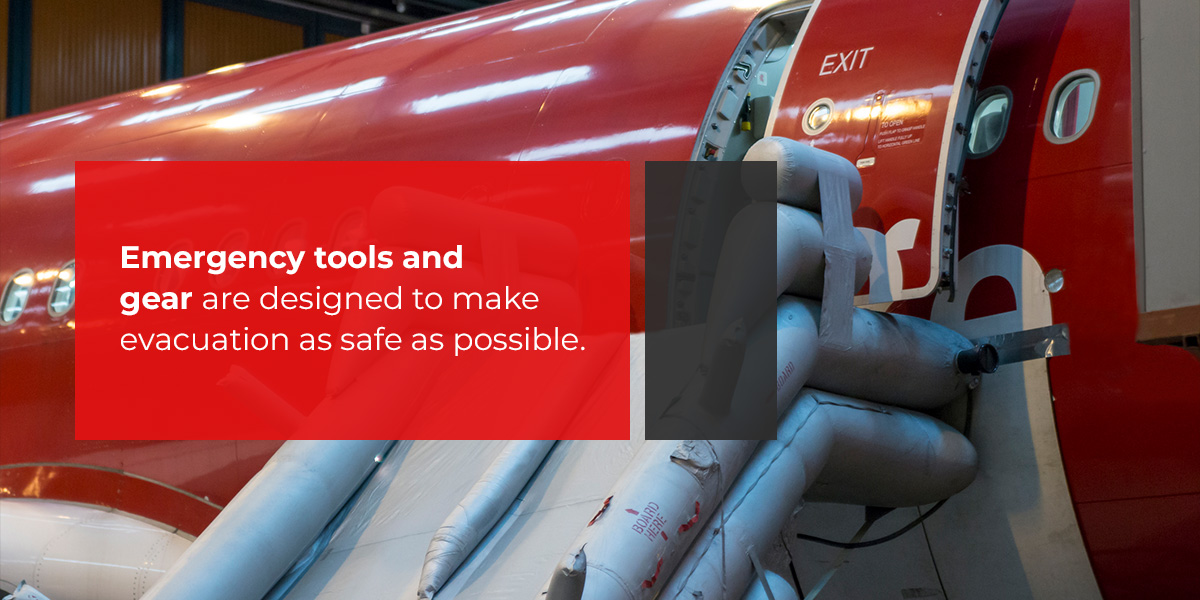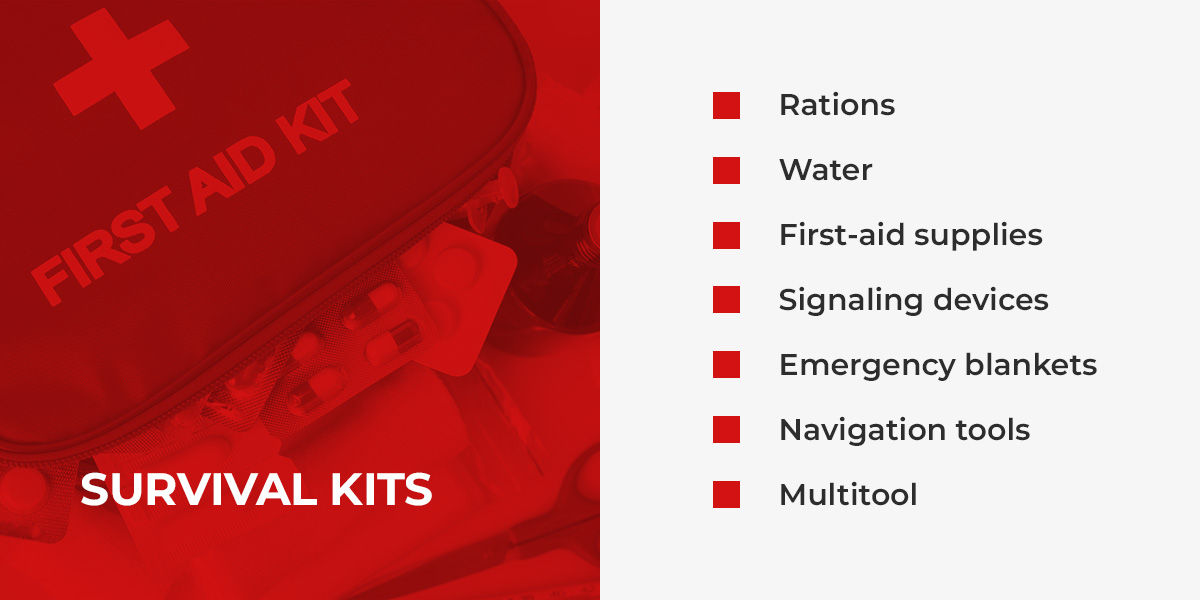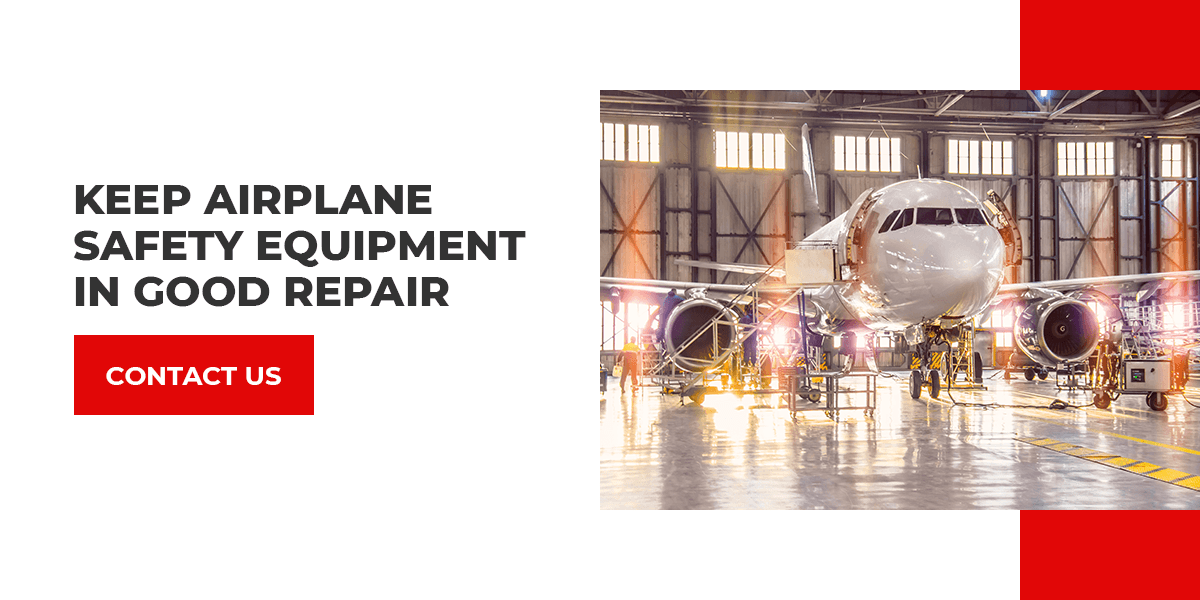What Safety Equipment Is on an Aircraft?
Modern aircraft come with a range of safety equipment to limit instances of and respond to incidents while in flight. Preventing emergencies is critical for the aviation industry — the whole sector is highly regulated to prevent dangerous problems from ever happening. These regulations keep planes, equipment, crews and passengers under strict controls to maximize safety across the board.
Air travel is generally very safe, with an average of one accident every 880,000 commercial flights. While there are incredibly low chances of an incident occurring while in flight, crews still need to be prepared. If an accident does happen, every aircraft must have the proper equipment to ensure the safety of all crew members and passengers. Let’s take a look at the different types of safety equipment in aircraft.
Oxygen Systems
Because air at higher altitudes is colder and less dense, it contains fewer oxygen molecules, making it harder to breathe. Air filtration systems help convert the outside air into breathable air. In case of a system failure, aircraft emergency oxygen systems ensure that everyone still has access to oxygen.
Cabin Oxygen System
Each passenger seat, flight crew seat and bathroom is equipped with oxygen generators and masks. If the cabin altitude reaches 14,000 feet, oxygen masks automatically deploy from above. If the automatic system fails, the flight crew has access to an override switch to open the oxygen doors for the cabin. And in case that doesn’t work, flight attendants can manually open each oxygen door through a release hole in the door.
Flight Crew Oxygen System
The cockpit contains one mask for each member of the flight crew. These masks include extra features compared to cabin masks. An inflatable harness ensures that the mask fits securely to the head. A flow-control knob lets the operator tweak the ratio of ambient air to pure oxygen. Additionally, a built-in microphone allows for continued communication with the rest of the crew.
Portable Oxygen System
Portable oxygen systems allow for oxygen to be used in emergencies where activation of the entire cabin’s oxygen system is not required. If a passenger is having trouble breathing, flight crew and licensed medical providers on the plane can bring the oxygen directly to them.
Depending on the size of the cylinder, portable oxygen systems can hold around 11 cubic feet of oxygen. Each cylinder comes with at least one disposable mask for administering oxygen. Pure oxygen flows through the mask by connecting the mask to continuous flow valves at the top of the unit. Depending on the valve used, oxygen flows at either 2 liters per minute or 4 liters per minute. A sticker on the side of the cylinder provides easy-to-read instructions for use.
Flight Crew Safety Equipment
Flight crew need their own equipment to ensure their safety while they fly. This specialized gear protects crew members without interfering with the passengers and additional safety tools onboard. Along with oxygen systems, the flight crew’s onboard safety equipment can include:
- Protective gear: Gloves, respirators, goggles, hand sanitizer and even face shields are equipment crew members might use to prevent exposure to hazards while working.
- Emergency Locator Transmitters (ELTs): Flight crew members, like pilots, might carry ELTs to help with location efforts during an emergency. ELTs emit distress signals, letting emergency responders find planes during emergency landings or crashes.
- Fire-resistant clothing: Flight crew members might wear fire-resistant clothing to protect them from heat and burns while working.
- Safety belts: The flight crew has specially designed seat straps to secure them in place. Passengers have a cushioned seat in front of them and a lap belt for safety. Since flight crews have no seat in front of where they strap in, their seat belts have additional straps.
Emergency Equipment
In an emergency landing, passengers and crew members need tools that will allow them to exit the plane safely. While there are extensive aircraft safety systems involved in your flight, planes also carry equipment to protect passengers and crew members in the event of an unplanned landing. Emergency tools and gear are designed to make evacuation as safe as possible. Flight crews are trained extensively in using this equipment to execute emergency procedures.
Evacuation Tools
In an emergency landing, evacuation tools ensure that passengers and crew members can safely exit the plane.
Here is a list of standard aircraft evacuation tools:
- Flashlights: Every pilot seat houses high-intensity flashlights behind them. These flashlights feature a flashing LED indicator to show that they are working correctly.
- Crash ax: Usually stored behind the copilot’s seat, the crash ax is strong enough to cut metal, open holes and force open doors and windows.
- Megaphones: If there’s a power outage to the aircraft’s public address system, megaphones help the crew share critical information.
- Escape ropes: Some emergency exits open to the wings of the plane. These ropes attach to loops on the wings so passengers can use them to steady themselves while they exit the plane.
- Evacuation slides: These slides are stored in the emergency exit doors, and once they are inflated and deployed, passengers can safely exit the plane without dropping from a dangerous height.
- Break-in area: If emergency personnel need to force their way into the aircraft, a marked break-in area on top of the fuselage lets them know the most accessible place to cut into.
Enhanced Emergency Medical Kits (EEMK)
All flight crew members undergo first-aid training in case of emergencies, and each aircraft requires an EEMK. In addition to bandages, antibiotic ointments and other materials found in home first-aid kits, the Federal Aviation Administration (FAA) requires that EEMKs include specific quantities of other lifesaving materials. These items include medications for pain relief, heart stimulants, inhalers, IV administration kits and a self-inflating resuscitation device. If a medical emergency is outside the scope of a flight crew’s training, any licensed medical provider onboard can use an EEMK to provide care in their place.
Fire Safety Equipment
Fires can start within an airplane for many reasons. Whether excess oil ignites and results in an engine fire or overheated food items in the galley catch fire, crew members can neutralize most aircraft fires with proper airplane safety equipment. The following fire-related emergency equipment is specially designed for use in aircraft.
Halon 1211 Fire Extinguishers
If an electrical, oil or fuel fire starts, crew members will use a Halon 1211 fire extinguisher. The chemical is suitable for use in cold weather and does not conduct electricity, making it perfect for aircraft use. The vapors created when Halon interacts with fire can cause dizziness when inhaled, which is why crew members must ventilate the cabin after use. All crew members must wear oxygen masks set to 100% oxygen use to remain alert while dealing with the fire.
The number of Halon fire extinguishers on the plane can vary depending on the size of the aircraft, but a typical passenger aircraft will carry two to three cylinders. A standard 2.5-pound Halon bottle discharges for 8 to 15 seconds before it runs out of chemicals.
Portable Water Fire Extinguishers
Water fire extinguishers are suitable for wood, paper and fabric fires. As the name suggests, these cylinders hold a pressurized solution of alkali salts in water. When operated, the cylinder projects a fine mist that extinguishes the flames.
Protective Breathing Units (PBU)
PBUs are personal smoke hoods that protect crew members from smoke inhalation. Each PBU is in a bag with a tamper-proof seal. Once opened, the crew member places the hood over their head and activates the oxygen cylinder inside.
Water Emergency Equipment
In a water landing, passengers and crew members must deploy water flotation devices to remain safe until help arrives.
- Life vests: Each crew member and passenger has access to a life vest equipped with a locator light, an instruction manual and an oral inflation system. Additionally, the seat cushions in passenger seats serve as flotation devices during an emergency.
- Life rafts: Most commonly found in wide-body international aircraft, life rafts are stored in the ceiling near the exits. Life rafts generally have survival kits that include signal flares, knives and covers to block the sun’s harmful rays. In some cases, the evacuation slide itself can even be used as a flotation device.
Survival Kits
Survival kits are a helpful addition to your aircraft safety checklist. While they’re not required by the FAA, having a survival kit can protect flight crew and passengers during emergencies. If you’re flying private, taking the time to ensure you’ve got a survival kit onboard can make all the difference during an emergency. These kits can contain:
- Rations: Nonperishable food like protein bars and dehydrated meals will keep everyone fed if help is not readily available.
- Water: You should pack water and water filtration devices to ensure everyone can access clean drinking water.
- First-aid supplies: Basic first-aid supplies will allow crew members to treat minor injuries during medical situations.
- Signaling devices: These systems help you reach emergency services after an incident.
- Emergency blankets: Packing reflective emergency blankets can keep users warm in cold and harsh environments.
- Navigation tools: Sometimes, rescue means navigating to another spot. Having GPS devices, compasses and maps will help keep you from getting lost.
- Multitool: A multitool can cut materials, build shelters and open packages. Use them to complete these and other tasks while in survival situations.
Keep Airplane Safety Equipment in Good Repair
It’s essential to inspect and maintain all safety equipment regularly to ensure your aircraft is ready for any emergency. HRD Aero Systems provides your operation with cost-effective repairs while maintaining quality service. Trust the safety of your equipment to a company with over 35 years of experience meeting FAA standards. Contact us today for more information on aviation products and services.

